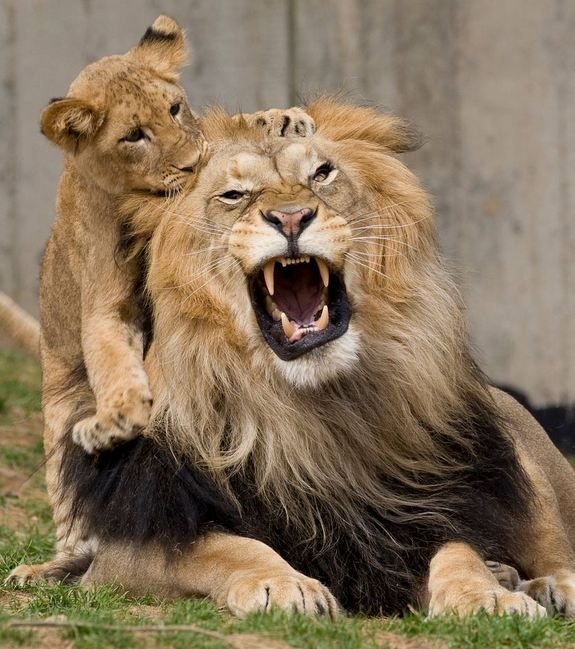
Lions are often called the kings of the jungle, but they actually prefer open grasslands and savannas. Despite their fierce reputation, interactions between lions and humans are relatively rare, and not all lions pose a threat. However, we should consider the circumstances surrounding these encounters, such as their natural behavior, habitats, and human activities that may bring us into contact with these magnificent beasts.
Understanding Lion Behavior
To grasp whether lions can be dangerous to humans, it helps to understand their behavior. Lions are social animals, living in prides. This means they have a strong social structure with roles within the group. Adult males have the responsibility of protecting the pride, which can lead them to be more aggressive if they feel their territory or family is threatened.
Here’s the thing: lions are predatory by nature. Their instincts drive them to hunt for food. However, they don’t actively seek out humans as prey. Most of the time, lions prefer larger animals, like zebras or gazelles. You might be wondering, “So, when do they see humans as a threat?” The answer is often linked to their environment and potential food shortages. When natural prey is scarce, lions might venture closer to human settlements, which can lead to dangerous encounters.
When Lions Attack
While attacks on humans are rare, they can and do happen. Most lion attacks occur when people encroach on their territory, especially near national parks or reserves. When lions feel cornered or provoked, their fight-or-flight response kicks in. They might see humans as threats rather than potential prey.
A story that illustrates this is from a village in Africa where lions began to roam near homes. The local community found themselves in a tense standoff. As the lions grew bolder, they approached livestock, leading to greater human-wildlife conflict. The villagers had to adopt new strategies to coexist, which included better fencing and keeping livestock closer to home at night.
Human-Lion Encounters
Many lion attacks result from accidental encounters rather than direct confrontations. For instance, researchers or wildlife enthusiasts venturing too close to a pride may be seen as intruders. Lions are protective animals, and if they perceive humans as a threat, their instincts might lead to aggressive behavior.
Consider safaris, where humans intentionally seek out lions in their natural habitat. Guides are trained to observe lions from a distance and understand their body language. For instance, if a lion flattens its ears or stares intently, it may be time to back off. The goal is to appreciate these creatures’ beauty and power while respecting their space.
Preventing Dangerous Encounters
Understanding how to prevent dangerous encounters is vital for both humans and lions. Here are some strategies that can help ensure safety:
- Stay at a Safe Distance: Whether on a safari or near lion habitats, always keep a respectful distance from lions.
- Avoid Night Activities: Lions are more active at night. Staying inside during these hours reduces the chance of an encounter.
- Educate Yourself: Knowing lion behavior and their habitats can help you navigate areas where lions roam.
By implementing these practices, we can help minimize the risk of dangerous encounters and foster a safer environment for both parties.
Conservation and Safety
Lions are facing significant threats due to habitat loss and poaching. As their natural habitats shrink, they’re more likely to encounter humans. This creates a precarious situation, as both sides often feel threatened. Conservation efforts aim to protect these big cats while educating local communities on how to coexist peacefully.
Organizations work on establishing wildlife corridors, which are safe passageways for lions to roam without crossing into human habitation areas. These corridors help maintain genetic diversity and reduce human-lion conflicts. You might find it reassuring that communities are involved in these efforts, learning how to protect themselves while also ensuring lions survive.
Community Involvement
Engaging local communities is crucial in conservation efforts. Many programs encourage residents to participate in monitoring lion populations. When people feel invested in protecting lions, they’re more likely to adopt practices that minimize conflict.
For instance, in some areas, locals receive training on using non-lethal deterrents, like noise-making devices or lights, to keep lions away from livestock. This enables them to safeguard their livelihoods while allowing lions to thrive in their natural environment.
The Bigger Picture
So, are lions dangerous to humans? The simple answer is that they can be, but the risk can often be managed through understanding and respect. Most lions won’t pose a threat unless they feel provoked or threatened. As we navigate our shared spaces, awareness and education play essential roles in reducing conflicts.
If you love nature and wildlife, remember that lions are an integral part of the ecosystem. By learning about their behaviors and supporting conservation efforts, you contribute to a world where both humans and lions can thrive.
Final Thoughts
In summary, while lions can be dangerous to humans under certain circumstances, understanding their behavior and respecting their territories can greatly reduce potential risks. It’s all about balance—appreciating these magnificent creatures while ensuring our safety. Just as we seek to coexist with nature, we can take steps to honor and protect the powerful lions of the wild. After all, respecting wildlife helps to preserve our planet’s natural beauty for future generations.

